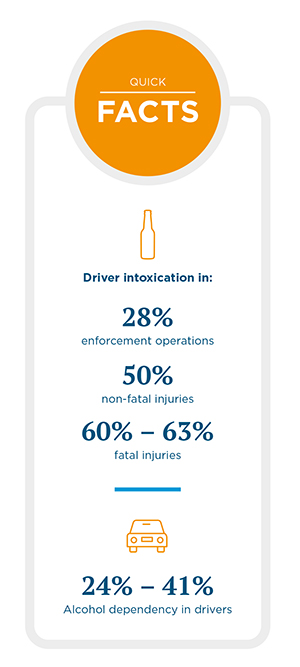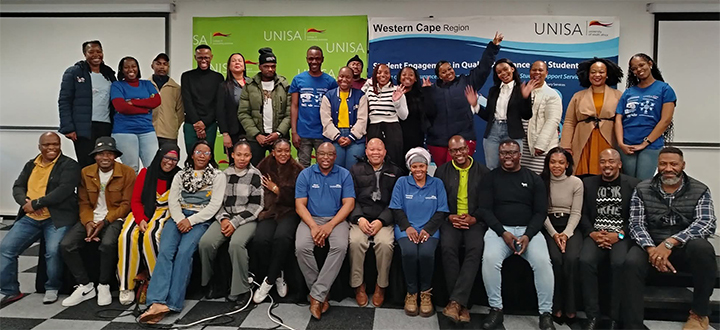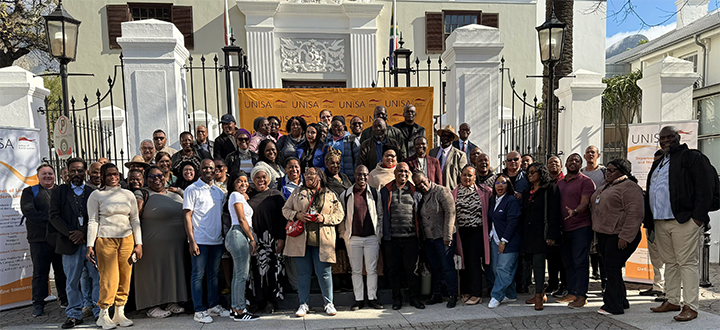College of Human Sciences
Play your part in curbing road tragedy

Prof Ashley van Niekerk (Institute for Social and Health Sciences: Unisa) says a degree of general vigilance is required for both daylight and night-time driving.
"Globally, and in South Africa (SA), behavioural risk factors have been identified as the most common risks associated with road traffic crashes and injuries. Alcohol-impaired driving is a leading behavioural risk factor that is currently receiving significant attention in SA. Other important risks include excessive and inappropriate driving speeds, inadequate or inappropriate use of safety restraints and devices, driver distraction and drug-impaired driving," says Prof Ashley van Niekerk from Unisa’s Institute for Social and Health Sciences.
Van Niekerk shares the information as the festive season looms and it is vital to remember to celebrate and drink responsibly to #ArriveAlive.
Together with other prominent researchers from sister universities, Van Niekerk prepared a study that investigated the role of driver alcohol intoxication as a risk factor for fatal road traffic crashes in the country for the period 2016 to 2018. The study discloses that driver alcohol intoxication accounts for 27.1% of fatal crashes in the country. The figure is considerably higher than current estimates and is projected to cost the economy R18.2 billion annually.
The Road Traffic Management Corporation has reported that the rates of road traffic injury and mortality death had recently decreased, in 2017 and 2018. However, despite global campaigns such as the UN Decade of Action for Road Safety and intensive South African efforts, this is still high at 25.9 traffic crash deaths per 100 000 population. Van Niekerk believes that society has made little, if any, progress, especially considering the UN Decade of Action’s call for a 50% reduction in road traffic deaths by 2020.
"Much more needs to be done at all levels, from legal enforcement, road user training, but more importantly, around the prioritisation, design, funding and implementation of safe, efficient and affordable mass transport systems that link communities to work, schools and recreational centres. This is admittedly a longer term and intensive demand, but one that requires urgent and expedited consideration in light of our persisting crash and mortality rates," argues Van Niekerk.
 Environmental risks are also of concern and are hugely important. Many cities and communities in SA have either no, limited or deteriorating pedestrian pathways. Pedestrians often have no other choice but to enter hazardous roads. They are consequently a vulnerable population in the country, and account for about 40% of all road-crash deaths.
Environmental risks are also of concern and are hugely important. Many cities and communities in SA have either no, limited or deteriorating pedestrian pathways. Pedestrians often have no other choice but to enter hazardous roads. They are consequently a vulnerable population in the country, and account for about 40% of all road-crash deaths.
It is also worth noting that SA has high accident zones and dangerous roads. Navigating through them requires vigilance and driving responses that are appropriate to the specific road signage warnings. According to Van Niekerk, a defensive driving approach is important, especially in complex road situations where multiple users use or are in close proximity to a road, including road users such as children and the elderly, pedestrians, cyclists and motorcyclists.
Van Niekerk urges motorists to be vigilant of "pre-planned accidents", which are an indication of the elevated levels of crime and violence in SA. Especially dangerous at night-time, although not exclusively so, the incidents are usually reported in local crime media and radio reports, which highlight where dangerous locations might be. Reporting such incidents to the police can assist with crime detection, enforcement and prevention activities, while local municipalities can also play a part in the prevention of such activities through the improvement of spaces that are reported for such criminal activity.
Some general tips on how to avoid and prevent road accidents
- A degree of vigilance is required especially in environments with "road user conflicts" where multiple user types, including various size vehicles, two wheelers and pedestrians are all required to use road spaces. These spaces may not have the physical barriers that separate the different road users.
- Drivers, in particular, have an elevated responsibility on the road, especially in road environments that include multiple and vulnerable users. However, the responsibility for the prevention of road accidents is ultimately a collective one that requires government, civil society partners and the general public.
- Traffic crash prevention interventions that have been recommended for SA include:
- Ongoing public and driver safety education
- Management of behavioural risks such as alcohol consumption
- Prioritisation and funding of safe road and pedestrian pathway designs
- Improvement of mass public transport
These all require both wide public support and robust government commitment and resources.
The recent United Nations World Day of Remembrance for Road Traffic Victims, held on the third Sunday of November each year, reminds us, among others, to remember those we have lost on our roads and to support the bereaved and those injured by road trauma.
You can read the report here.
* By Nancy Legodi, Acting Journalist, Department of Institutional Advancement
The graphic for the teaser was sourced from Daily Times.
Tackling drunk driving head on
Publish date: 2020-12-01 00:00:00.0


 CAS students take centre stage in shaping academic quality and support
CAS students take centre stage in shaping academic quality and support
 Unisa engaged scholarship project heads to parliament
Unisa engaged scholarship project heads to parliament
 Unisa and ATUPA recognise researchers for ingenuity and innovation
Unisa and ATUPA recognise researchers for ingenuity and innovation
 Recognising the unceasing resilience of women
Recognising the unceasing resilience of women
 Unisa and SHECASA promote institutional health and safety
Unisa and SHECASA promote institutional health and safety